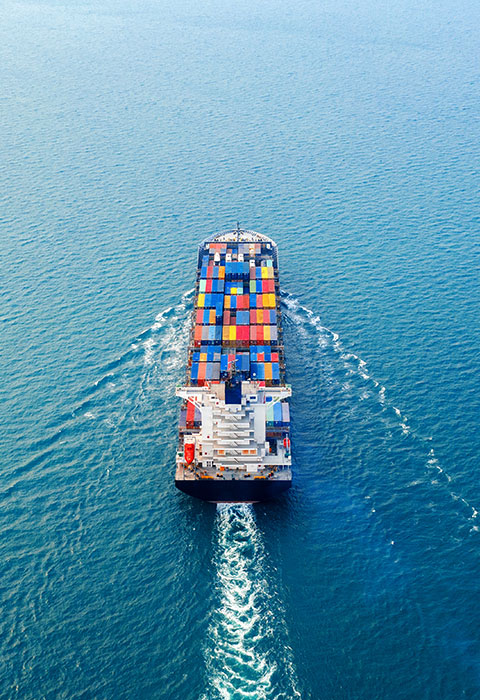Ocean Freight Experts
Ocean freight involves inherent risks, including damage, loss, theft, and natural disasters. Cargo insurance offers protection against these risks, providing financial coverage for goods in transit. Risk management strategies help mitigate potential disruptions and losses.
Ocean Freight Services
When cost effectiveness is what you are looking for, containerized ocean freight is the answer. Worldwide routes and transit times are continuously improving and being made more efficient to meet the wishes of the global demand. We will assist in finding the perfect FCL/LCL solution for your company and your global business.
Ocean freight is the most cost-effective mode of transportation and can be implemented for the smaller partial loads (LCL) and the full container loads (FCL). The range of sailings and options are well represented globally with the vast network of our Extensive Freight at your fingertips. Whatever your logistic need is, there is likely a fitting schedule to suit it.
Safe and sound creates ease of mind. The risk of damages or calamities are very low in ocean freight. Within our Extensive Freight Service, we value the global rules and regulations that ensure your products arrive in the desired state at the wanted destination.

Ocean Freight Key Features
- Cost-effective transportation for large volumes of goods.
- Extensive global coverage, connecting major ports worldwide.
- Flexible options for containerized or bulk cargo shipments.
- FCL: Dedicated container for exclusive use, suitable for large shipments.
- LCL: Consolidation of multiple shipments in shared containers, ideal for smaller loads.
- Ro-Ro: Vehicles and rolling cargo loaded directly onto vessels, facilitating efficient transport.
- Extensive network of maritime routes covering all major trade lanes.
- Direct and transshipment services to reach destinations efficiently.
- Regular sailing schedules for predictable transit times and reliable service.
- Standard containers: 20-foot (TEU) and 40-foot (FEU) containers for general cargo.
- High Cube containers for voluminous cargo.
- Refrigerated containers (Reefers) for perishable goods.
- Open-top containers, Flat Rack containers, and Tank containers for oversized or specialized cargo.
- Estimated transit times provided by carriers for different routes and services.
- Factors affecting transit times, such as vessel schedules and port operations.
- Planning and coordination to minimize lead times and ensure timely delivery.
- Assistance with preparation and verification of shipping documents.
- Compliance with import/export regulations and customs requirements.
- Expedited customs clearance services to avoid delays and penalties.
- Description: Ocean freight providers offer tracking and visibility solutions to monitor the status and location of shipments throughout the transportation process. Advanced tracking systems provide real-time updates on cargo movements, enhancing transparency and control.
Key Features:
-
- Online tracking platforms accessible to shippers and consignees.
- Milestone notifications for key events, such as vessel departure, arrival, and customs clearance.
- Integration with supply chain management systems for seamless visibility and reporting.
- Description: Ocean freight involves inherent risks, including damage, loss, theft, and natural disasters. Cargo insurance offers protection against these risks, providing financial coverage for goods in transit. Risk management strategies help mitigate potential disruptions and losses.
Key Features:
-
- Cargo insurance options tailored to specific shipment requirements.
- Risk assessment and mitigation measures to minimize exposure to potential hazards.
- Claims assistance and support in the event of cargo loss or damage.
- Description: Environmental sustainability is a growing focus in the ocean freight industry, with efforts to reduce emissions, conserve resources, and minimize ecological impact. Initiatives such as fuel-efficient vessels, eco-friendly practices, and alternative propulsion technologies contribute to greener shipping.
Key Features:
-
- Adoption of eco-friendly technologies and practices to reduce carbon footprint.
- Compliance with environmental regulations and emission standards.
- Collaboration with industry stakeholders to promote sustainable shipping practices.
